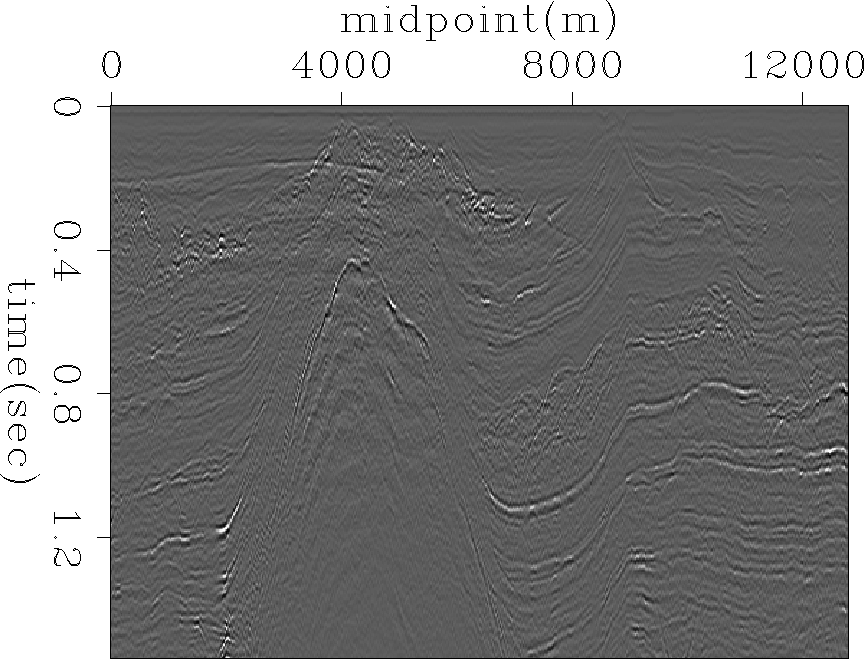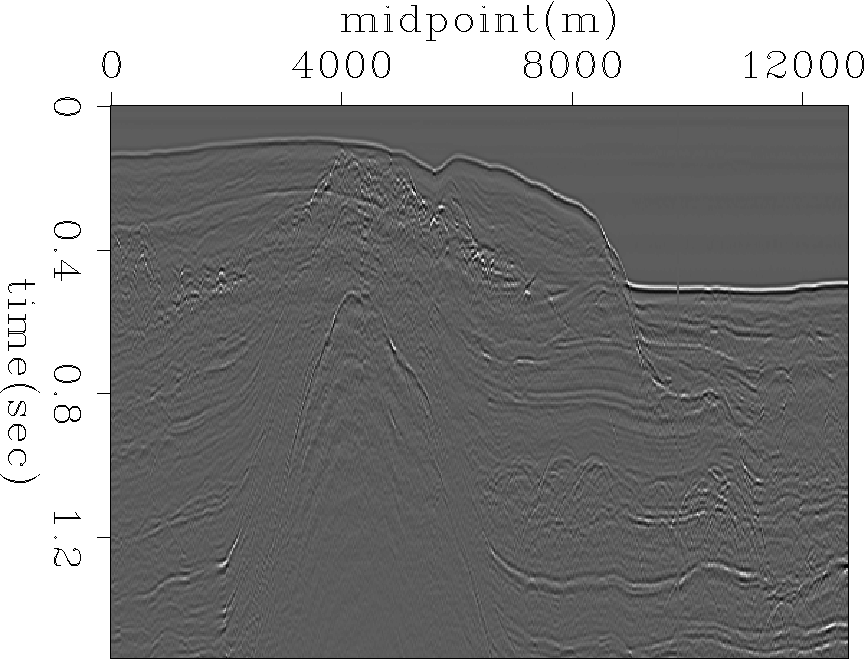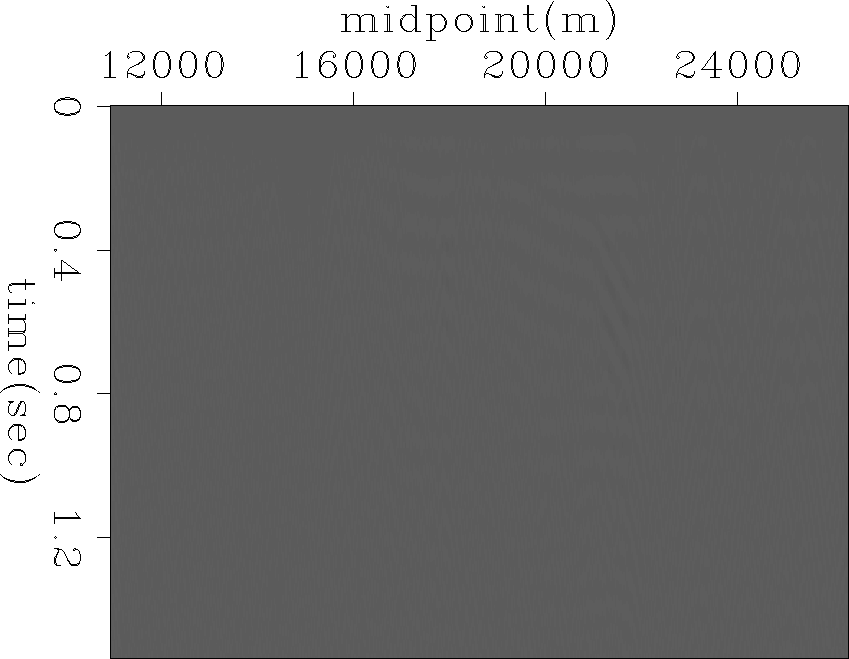




Next: PRESTACK DATUMING
Up: POSTSTACK DATUMING
Previous: Synthetic examples
One of the practical applications of datuming in seismic
data processing is layer replacement
Berryhill (1986); Yilmaz and Lucas (1986).
The layer replacement refers to replacing
the overburden velocity with the velocity of the substratum,
thereby eliminating raypath bendings
at the interface between the overburden and the substratum.
Time migration after layer replacement
can be a practical alternative to depth migration.
Therefore, one of the most important things in layer
replacement might be preserving the correct spectral property
of the original data.
The ability to preserve the correct spectral property
in layer replacement techniques
can be verified by the unitary characteristic
of the datuming operator used in the layer replacement.
I applied the datuming algorithm to marine data to illustrate
the effectiveness of the datuming algorithm.
The near-offset section of a marine data set is displayed
in Figures 8.
This is the Gulf of Mexico data obtained by Amoco.
The complex structure along the sea bottom causes
raypath bending that induces
distortions and disruptions on reflections beneath a complex structure.
The dashed line in Figures 8 represents a datum along the
sea floor defined by the first break picks.
The near offset is 30 meters
so I treat the data as if it were zero-offset
and input it to the datuming algorithm.
The datuming to the sea floor is performed using phase-shift
extrapolation with water velocity, 1500. m/s, and
the result is displayed in Figures 9.
To compare with the original data, I used the same water velocity
in the process of upward continuing the data back to sea level.
Unlike the Kirchhoff datuming Berryhill (1979); Bevc (1992)
which loose some high frequency component, we can see that
the datuming used in this paper preserve the spectral
property of the original data after layer replacement.
The difference between the original data and the data after
layer replacement is shown in Figure 11
and confirms the nice property of the datuming operator used.
real-data
Figure 8 Gulf of Mexico near-offset data with first break picks overlaid.




 real-sea-bottom
real-sea-bottom
Figure 9 Golf of Mexico near-offset data datumed to the ocean bottom.




 real-sea-surface
real-sea-surface
Figure 10 Golf of Mexico near-offset data redatumed to the sea level.




 real-diff
real-diff
Figure 11 The Difference between Figure 8 and Figure 10.
It is too weak to see in the paper printout gray scale.
You may try xtpen by clicking the button to see the difference.










Next: PRESTACK DATUMING
Up: POSTSTACK DATUMING
Previous: Synthetic examples
Stanford Exploration Project
11/17/1997




